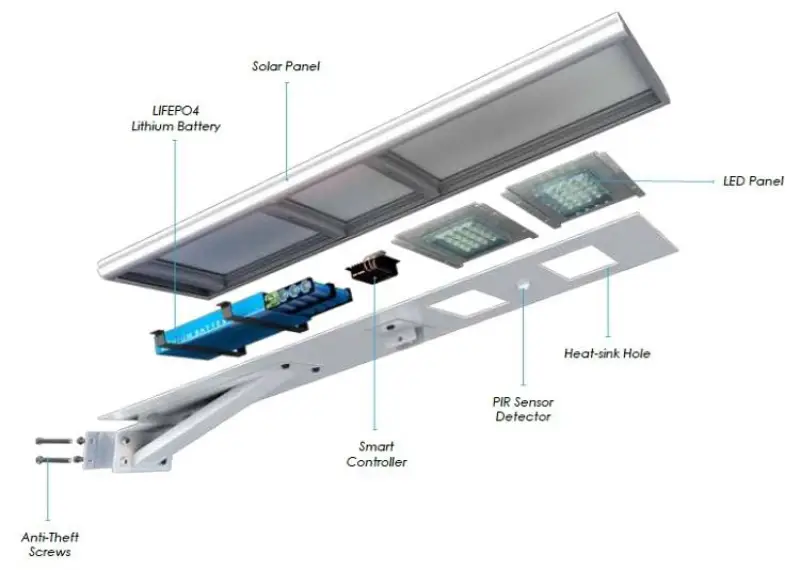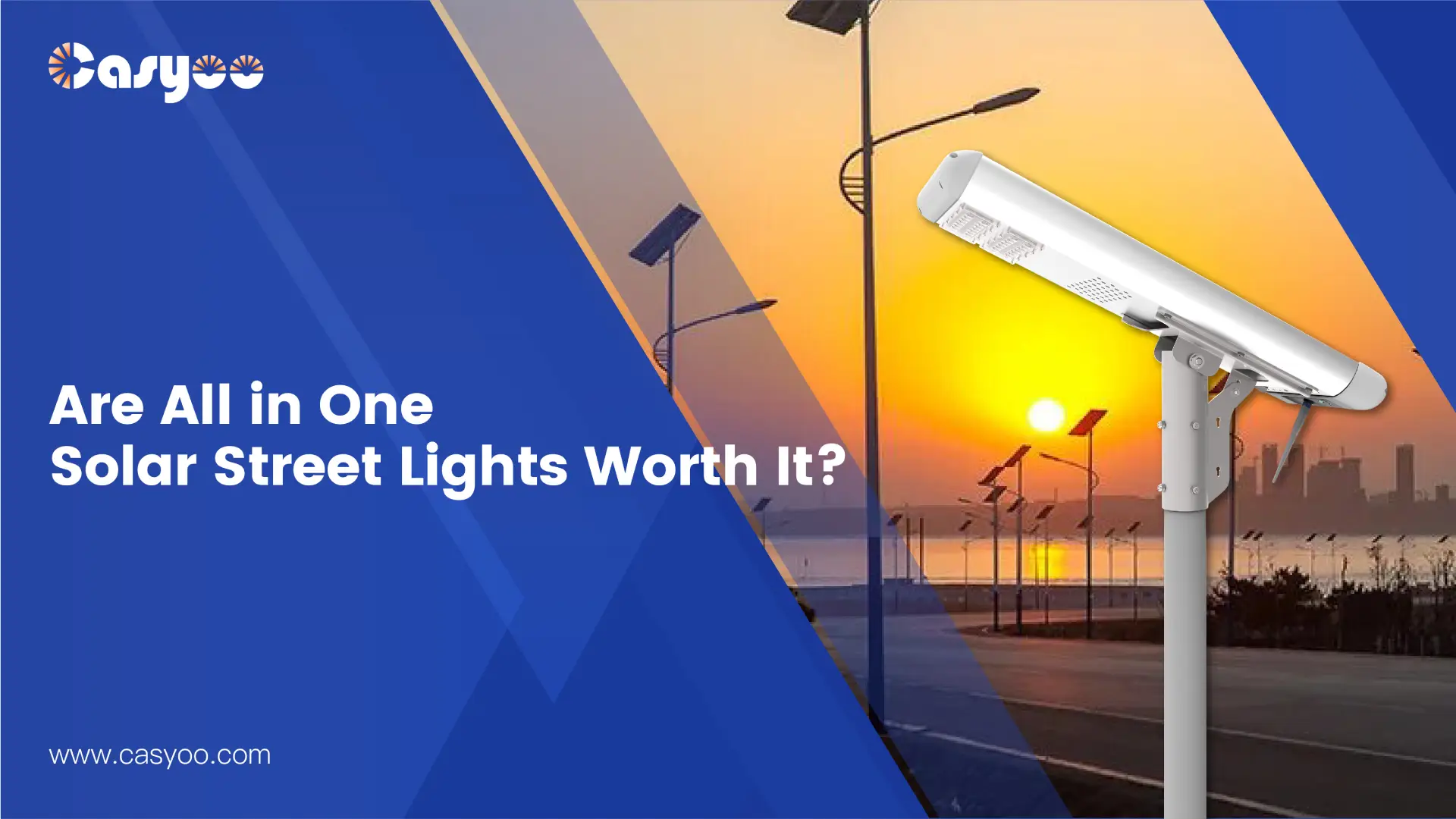You may have heard about people in remote areas applying solar street lights to light up their neighborhood and want to give it a try. But wait, here is another choice—all in one solar street lights! They are integrated lights that include all the important components in one lamp head. Follow us to learn more about their differences from traditional solar lights and how to choose the lights that work for you!
Traditional vs All in one solar street lights
- Structure: Traditional solar lights consist of batteries, LED lights, solar panels, controllers, and light poles. The battery is buried underground and connected to the lamp head by cables inside the pole. All-in-one solar street lights, on the other hand, have all these components integrated within the lamp head. They can operate with or without a light pole.
- Price: Because of their special design, integrated solar lights often have less panel power and battery capacity than separate ones, so they are less expensive.
- Installation: Integrated solar lights are easier to install—all you need to know is how to tighten the screws. In contrast, installing traditional solar lights includes assembly, wiring, constructing a battery pit, and so on.
- Repair: If the traditional solar lights fail, you need to ask professionals to visit and inspect the batteries, photovoltaic panels, LED lamps, wiring, and other components one by one. For integrated solar lights, you can just return the lamp head to the factory for repair.
- Power: The power of traditional solar lights can range from 10 to 80 watts. Compared with them, integrated solar lights have lower power due to structural limitations.
- Applications:
- Traditional solar street lights: major roads and highways with high lighting requirements, squares, villages, industrial parks, etc.
- Integrated solar street lights: rural roads, factories, residential districts, etc.

Which one should I choose, traditional or all in one solar street lights?
Benefits of integrated solar street lights:
- Appealing design
- Cheaper cost
- Easy to install and transport
- They apply the lithium battery, which has a good charging cycle and deep discharge capabilities.
The integrated solar lights’ drawbacks are:
- Due to their compact design, all-in-one solar street lights typically have lower panel power and battery capacity. Therefore, sometimes integrated solar lights cannot meet the high lighting requirements of the main roads.
- Most integrated solar lights can only support common controlling systems like timers, light sensing, and motion sensing.
Advantages of traditional solar street lights:
- The capacity of panels and batteries can be designed according to different applications and requirements.
- Lighting control design can be tailored to the needs of clients to satisfy their lighting requirements in a variety of situations.
Drawbacks of traditional solar lights:
- The gel batteries of most traditional solar lights cannot last as long as the lithium batteries.
- The cost of installation and shipping has significantly increased because traditional solar lights have more components.
- In summary, integrated solar street lights are recommended for illuminating minor roadways in rural and urban areas. Traditional solar lighting systems should be considered when lighting key routes or when there is a high requirement for illumination.
How to choose suitable integrated solar street lights?
Solar panels: Common solar panel (photovoltaic module) materials include monocrystalline, polycrystalline, and amorphous silicon. Monocrystalline silicon has the highest conversion efficiency, followed by polycrystalline silicon, and then amorphous silicon.
Light source: Solar lights usually apply LED lights because they are energy-saving, environmentally friendly, long-lasting, and use a DC power supply. LED lights with high efficiency and low light decay are the best choice.
Batteries: Compared with lead-acid batteries, lithium-ion batteries are the better choice for solar lights because of the following advantages: environmental friendliness, lack of pollution, compact size, huge capacity, superior safety performance, and long lifespan.
Controllers: A high-performing charge and discharge control circuit is necessary for all solar lamps. Compared with the switch charge and discharge controller, the PWM controller has consistent performance, more functions, and a longer lifespan.
Light pole: You should ensure that the light pole’s diameter and thickness fulfill the standards. The height of the light pole should be determined by the road width, lamp spacing, and the road’s illumination standard.
Conclusions
We need to thoroughly consider the application areas and lighting requirements of your project to decide whether using all in one solar street lights is a good idea. The invention of integrated solar lights has provided another available solar lighting solution. Get in touch with us at any time if you need assistance organizing your lighting project!




